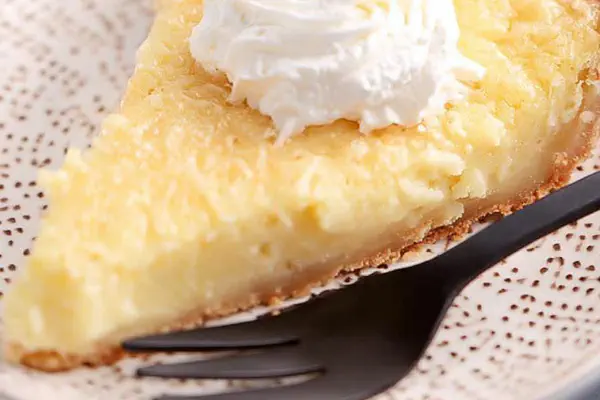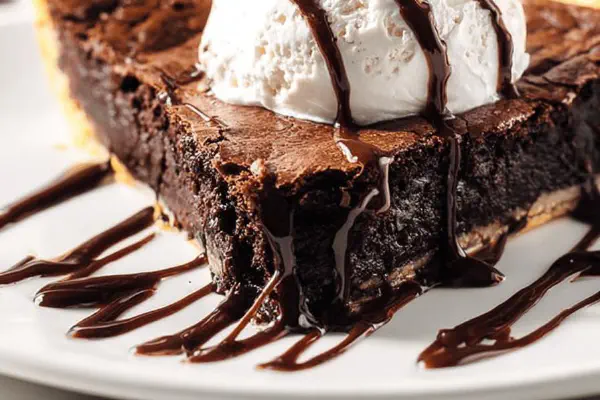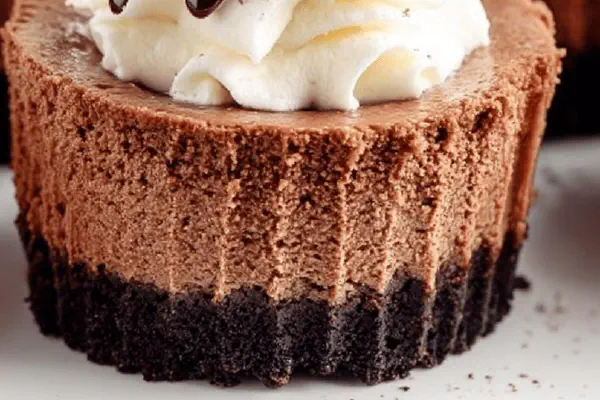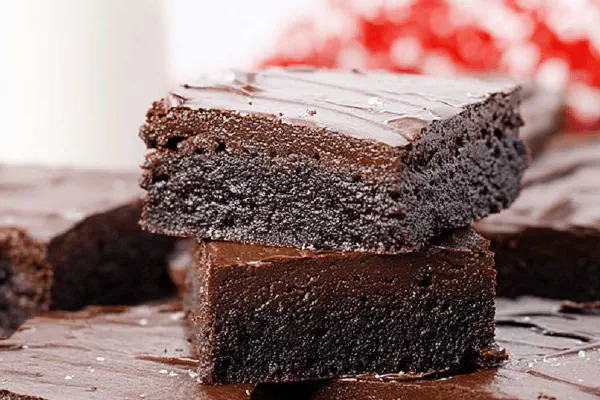Rustic Chocolate Chess Pie
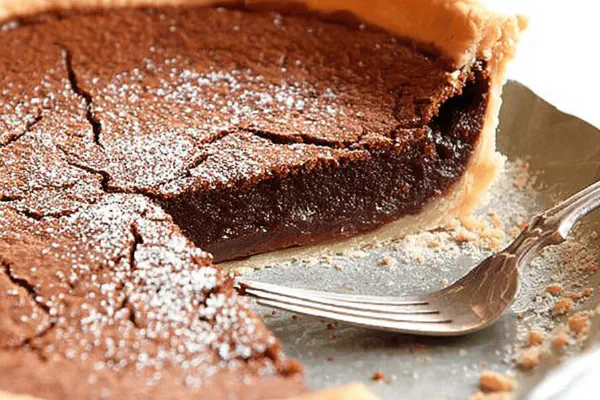
By Emma
Certified Culinary Professional
Ingredients
- 1/3 cup Dutch-processed cocoa powder
- 3/4 cup granulated sugar
- 1/4 cup cornstarch
- 3 large eggs, beaten
- 6 tablespoons unsalted butter, melted
- 1/2 cup whole milk
- 1/2 cup buttermilk
- 1 teaspoon pure vanilla extract
- 1 unbaked 9-inch pie shell
About the ingredients
Method
- Preheat oven to 350F. Butter your pie dish lightly to keep crust happy. Dutch-processed cocoa matters here for deeper color and mellow acidity.
- In a large bowl, whisk dutch cocoa, sugar, and cornstarch thoroughly until no lumps—cornstarch is your custard’s thickener; don’t skimp or you’ll end with runny pie.
- Pour eggs into dry mix slowly while whisking. Incorporate melted butter next, then milk and buttermilk, stirring until sheen forms, smooth and thickened slightly. Vanilla last to keep aroma fresh.
- Pour filling carefully into your pie shell. Avoid overfilling, leave about 1/4 inch to avoid spillover. The pie will puff slightly but needs space to breathe.
- Bake at 350F for about 50 minutes but watch more than time here: The top will develop a subtle crust that looks matte and dry but underneath should jiggle like pudding when shaken gently. That jiggle means custard finish baking after pulled from oven.
- If edges brown too fast, tent with foil halfway to prevent burning but let center firm.
- Cool completely on wire rack for 3 hours or longer. This step is crucial—cutting too soon will wreck structure. The filling firms from residual heat and chilling, stabilizing texture.
- Serve with whipped cream and, if you’re feeling adventurous, chopped toasted hazelnuts or a sprinkle of flaky sea salt for contrast.
- Storage note: Refrigerate leftovers covered. Custard pies can weep moisture; bring back to room temp before serving for best flavor and texture.
Cooking tips
Chef's notes
- 💡 Dutch-processed cocoa is key here. Less acidity than natural; gives deeper color and mellower bite. Powder should be sifted or whisked well—lumps kill custard texture. Melted butter must cool before adding or eggs scramble. Take your time whisking eggs into the dry mix; emulsify slowly to avoid gritty patches or curdling.
- 💡 Watch the crust edges, not just center. If they brown too fast, tent with foil. Cracking often means oven temp is too high or pie cooled too fast. Serve pie room temp or chilled; warm pie is wobbly but still sets with residual heat. Residual heat finish is important; don’t pull out too early or pie stays too runny.
- 💡 Cornstarch is essential over flour. Gives clarity and proper set without gumminess. Too little = runny custard disaster, too much = gluey texture. Whisk dry ingredients first to avoid lumps. Pie shell: homemade flaky crust beats store bought every time but store bought works if well buttered and trimmed.
- 💡 Pour filling slowly. Avoid splash into crust edges or bubbling causes burnt sugar spots that taste bitter. Oven temps vary—use thermometer if you can. Visual clues beat timers: top goes matte, dull, sometimes small cracks. That jiggle test is gospel—too much jiggle means underdone; no jiggle means dry and overbaked.
- 💡 Chilling is non-negotiable. Wire rack to avoid soggy bottom. Cut only after pie is fully cooled, 3 hours minimum or longer. Sugars settle while cooling, structure firms. Leftovers? Keep covered in fridge. Pie pieces weep moisture but warming up to room temp before serving balances flavor and texture.
Common questions
How to know pie is baked?
Look for matte top. No shiny spots. Jiggle center gently. Pudding wobble means custard still cooking post oven. No jiggle = done. Sometimes edges firm first so test middle carefully.
Can I replace buttermilk?
Yes buttermilk tang matter. Use milk plus tablespoon vinegar or lemon juice, rest 5 min to sour. Impacts flavor and texture subtly but worth it. Regular milk makes pie sweeter, less tangy, and denser.
Pie cracks on cooling?
Usually from oven temp too high or cooling too fast. Avoid opening oven early. Oven thermometer helps. Cool gradual on wire rack. Cracks don’t ruin taste but do affect look.
Best way to store leftovers?
Refrigerate pie covered loosely. Let piece come to room temp before eating; reheating messes custard texture. Can freeze but texture changes; thaw slowly in fridge. Soggy bottoms possible if wrapped airtight still warm.
